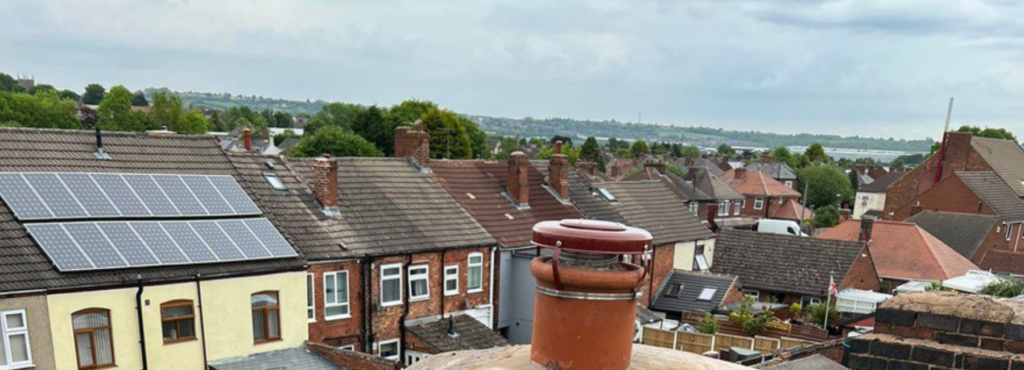Slipped tiles on a roof might seem like a minor inconvenience, but they often indicate more serious underlying issues that can compromise the integrity of your entire roofing system. Ignoring slipped tiles can lead to costly repairs and even structural damage if not addressed promptly. At March Roofing Repairs, we understand the importance of maintaining a secure and watertight roof for homes in March, Cambridgeshire. In this post, we’ll explain why slipped tiles are a red flag for bigger problems and what you can do to protect your roof.
What Causes Roof Tiles to Slip?
Roof tiles can slip for a variety of reasons, some of which are linked to the natural wear and tear that roofs experience over time. However, several underlying issues can cause tiles to loosen and slip, including:
- Weather Damage: Strong winds, heavy rainfall, and storms are common culprits that can dislodge roof tiles. Over time, extreme weather conditions can weaken the fixings that hold tiles in place, causing them to slip.
- Poor Installation: If your roof tiles were not installed correctly, they are more likely to slip. Inadequate fixings or improper positioning can result in tiles becoming loose over time, especially after periods of harsh weather.
- Ageing Roof: Roofs naturally degrade over time. The nails, battens, and fixings that hold tiles in place can corrode or weaken, leading to slipping tiles as the roof ages.
- Structural Movement: Houses expand and contract with temperature changes, and over time, this movement can cause roof tiles to slip. Additionally, structural movement due to settling or shifting foundations can also result in loose tiles.
Why Slipped Tiles Signal Bigger Problems
While slipped tiles may appear as a small issue, they are often the first visible sign of more significant roofing problems. Here’s why slipped tiles should never be ignored:
- Water Ingress and Leaks
One of the most immediate concerns with slipped tiles is that they leave your roof exposed to water ingress. Even a single displaced tile can allow water to penetrate the roof structure, leading to dampness, leaks, and damage to the internal structure of your home. Over time, water ingress can cause rot, mould, and mildew, which can compromise the safety of your home and increase repair costs.
- Damaged Underlayment
The underlayment beneath your tiles acts as a secondary barrier to protect your roof from moisture. When tiles slip, this layer can become exposed to the elements, weakening its effectiveness. If the underlayment is damaged, it can lead to further water damage, causing issues such as warped wood or damaged insulation.
- Structural Damage
Slipped tiles often indicate that the battens or fixings that secure the tiles are beginning to fail. If these components are deteriorating, they can affect the overall structural integrity of your roof. Over time, this can lead to more extensive and costly repairs, as the roof may no longer be able to support its own weight.
- Increased Energy Bills
Slipped tiles can also impact your home’s energy efficiency. When tiles are not in place, warm air can escape during the winter, while cool air can leak out during the summer. This forces your heating and cooling systems to work harder to maintain a comfortable indoor temperature, resulting in higher energy bills.
- Pest Infestation
Gaps created by slipped tiles provide an entry point for pests such as birds, rodents, and insects. These pests can cause further damage by nesting in your roof space or gnawing on wood and insulation. Dealing with an infestation adds another layer of inconvenience and cost to an already compromised roofing system.
How to Address Slipped Tiles
If you’ve noticed slipped tiles on your roof, it’s essential to act quickly to prevent further damage. Here are some steps you can take:
- Schedule a Roof Inspection
The first step is to arrange a professional roof inspection. At March Roofing Repairs, we provide comprehensive inspections to assess the condition of your roof, identify the cause of the slipped tiles, and recommend the necessary repairs.
- Repair or Replace Damaged Tiles
Once the cause of the problem has been identified, the next step is to repair or replace the slipped tiles. Our team of experienced roofers ensures that each tile is securely fixed, restoring the integrity of your roof.
- Check the Roof Structure
In some cases, slipped tiles may indicate issues with the roof’s structure, such as damaged battens or fixings. It’s important to address any structural issues to prevent further tile slippage and ensure the long-term health of your roof.
- Regular Roof Maintenance
To prevent future problems, regular roof maintenance is essential. This includes routine inspections and minor repairs to keep your roof in optimal condition and avoid more significant issues down the line.
Conclusion
Slipped tiles are more than just a cosmetic issue—they are often a sign of bigger problems that, if left unchecked, can lead to costly repairs and damage to your home. At March Roofing Repairs, we specialise in identifying and addressing roofing problems before they escalate. If you’ve noticed slipped tiles on your roof, contact us today for a professional inspection and expert repairs. Protect your home in March, Cambridgeshire, with our reliable roofing services.
Call us on: 01354 707 496
Click here to find out more about March Roofing Repairs
Click here to complete our contact form and see how we can help with your roofing needs.

